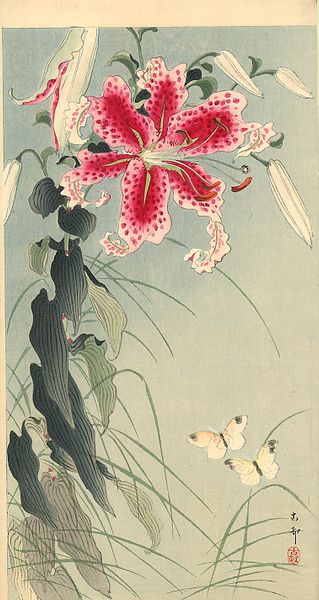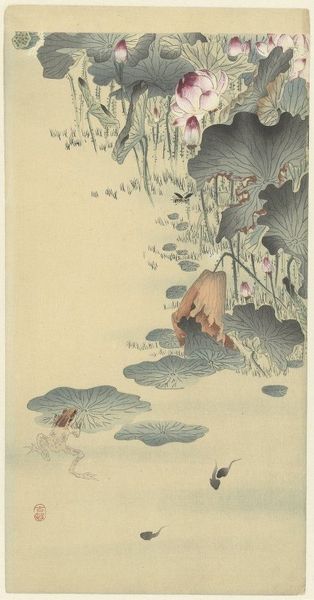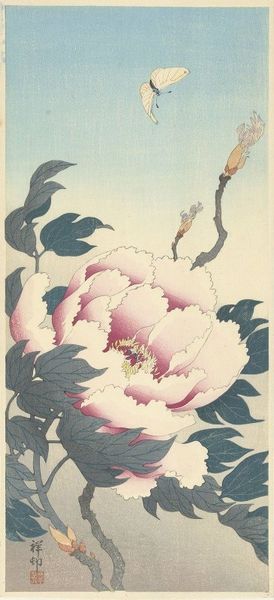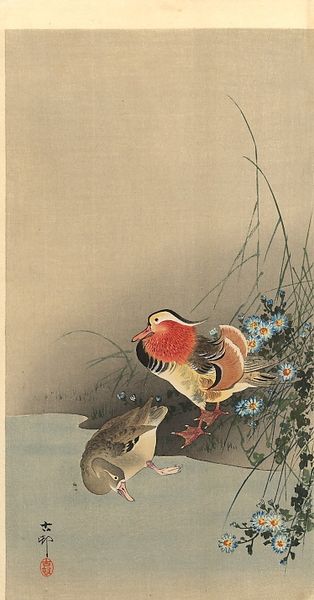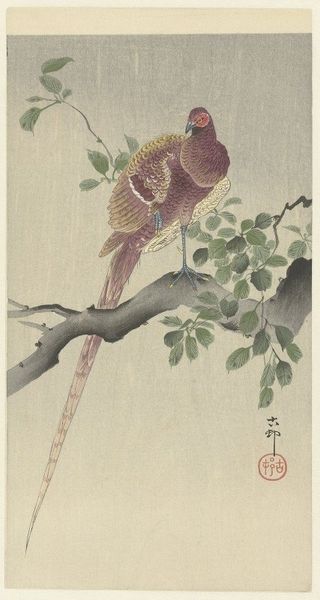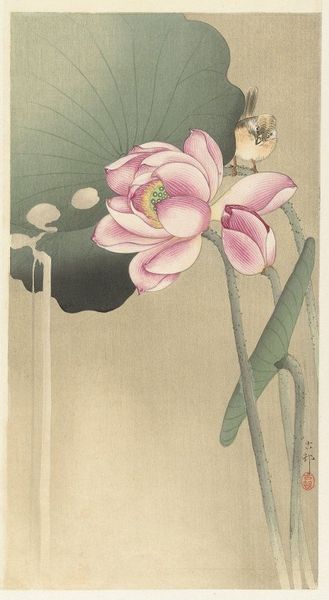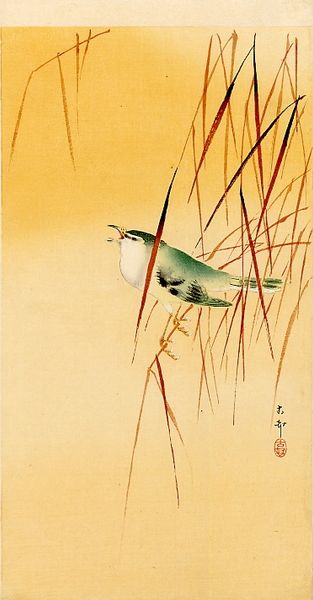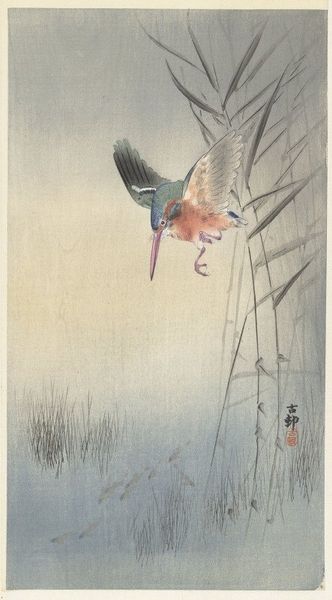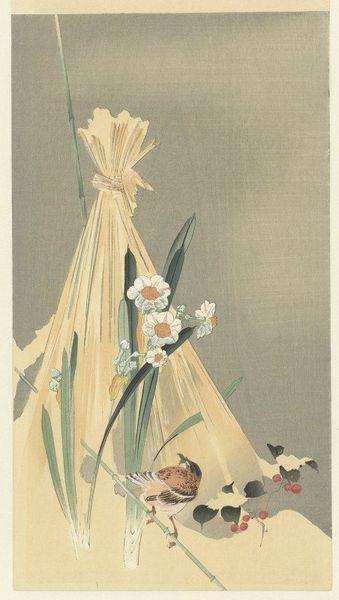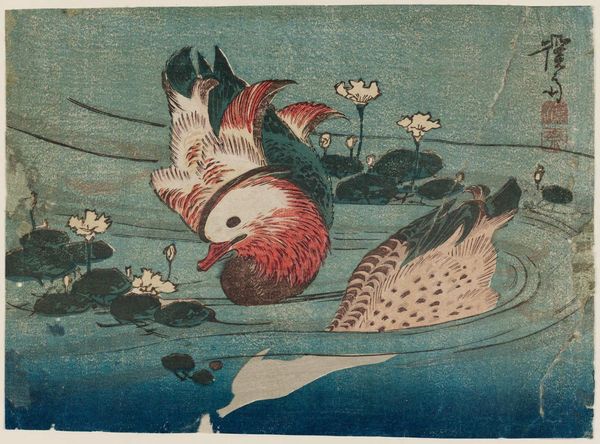
print, woodblock-print
# print
#
ukiyo-e
#
coloured pencil
#
woodblock-print
#
sketchbook drawing
#
watercolour illustration
#
cartoon carciture
#
watercolor
Copyright: Public domain
Curator: Welcome. Before us is "Crabs," a vibrant woodblock print by Ohara Koson. Look closely at its intricate details and simple beauty. What do you first observe? Editor: There's a charming simplicity here. A pale wash creates this almost dreamlike, sandy expanse populated by crabs of varied red shades and grasses. There’s a gentleness in how Koson captures these creatures in their habitat, a far cry from our human inclination to boil them. Curator: Yes, the red resonates deeply—conjuring thoughts of vital energy, of creatures scurrying in tide pools. Note also the visual cues from Ukiyo-e art: how lines articulate each form—shell, claw, grass blade. Koson invites us into an intimate engagement with nature. Editor: Ukiyo-e definitely brought new approaches to landscape painting. There is so much context here when one thinks of resource exploitation, particularly in fragile tidal ecosystems that endure pollution. What looks idyllic carries complex baggage in a post-industrial world. Curator: Absolutely. Japanese prints often present a perfected world. In shintoism, water symbolizes purification and cleansing—the crab walking a liminal shoreline signifies renewal and transition. This adds a spiritual layer, transcending pure representation. Editor: I'd like to reflect for a moment that even in our current climate crisis the tide line is seen as transition and renewal—yet sea creatures also show evidence of decline and death in those areas. This crab has symbolic depth and can connect with contemporary discourse in unexpected ways. Curator: Your point emphasizes the endurance of symbolic languages across history. These creatures become mirrors, showing cultural relationships to nature over time, both intimate and exploitative. Editor: Agreed, seeing that tension keeps the viewing experience from being simply beautiful or nostalgic; it encourages deeper reflections. Curator: We are brought to new understandings when connecting symbolism to modern discussions of ecological consequence. Editor: Indeed. Now, I'm left pondering about the space between natural harmony and ecological responsibility. Thank you.
Comments
No comments
Be the first to comment and join the conversation on the ultimate creative platform.

